Coaching - For Managers and Leaders
"If you want to improve the organization, you have to improve yourself and the organization gets pulled up with you."
- Indra Nooyi (Chairperson and CEO, PepsiCo)
coaching as a Journey, Not a Quick Fix
If you’re here, chances are you’re carrying more weight on your shoulders than most people ever see. The pressure to perform. The endless list of priorities. The fact that every decision you make seems to ripple outwards to your team, your customers, and sometimes even your family.
It’s no small thing to lead.
And yet, leaders are rarely given a guidebook. Promotions come fast, expectations climb even faster, and suddenly you’re meant to have all the answers. At the same time, you’re human: you get tired, you doubt yourself, and you wonder how long you can sustain the pace without sacrificing the rest of your life in the process.
That’s where coaching comes in.
Coaching is not about telling you what to do or serving up a neat five-step formula. It’s about walking alongside you, as a trusted guide and thinking partner, helping you make sense of what matters most and how to achieve it. It’s about asking the right questions at the right time, so that the way forward becomes clearer—and so that you feel supported while taking the next step.
At In Bloom, we see coaching as a journey. Sometimes it’s six weeks of sharpening focus and building confidence for a new role. Sometimes it’s years of steady support as a leader navigates growth, setbacks, opportunities, and everything in between. Whatever the shape, the destination is always the same: you, at your best, leading with clarity and energy, without burning yourself out along the way.
Why Coaching Matters for Leaders Today
There’s a reason leadership coaching has moved from “nice-to-have” to “must-have” in so many organisations. The demands on leaders have shifted dramatically in the last decade. Today’s leaders are asked to deliver results in environments that are faster, more complex, and often more ambiguous than ever before.
Some common challenges we see:
Rapid promotions without a roadmap. A high-performing individual contributor gets recognised (well deserved) and promoted into leadership, sometimes overnight. But without prior people-leadership experience, that leap can feel like stepping into uncharted territory with no compass.
The rise of hybrid work. Leading teams you can’t always see requires new skills in trust, influence, and communication. It’s one thing to run a meeting in a boardroom, another to inspire commitment through a laptop screen.
Decision fatigue. Hundreds of small and large decisions pile up every week. Without support, leaders often default to reactive mode. Firefighting today’s problems instead of creating tomorrow’s opportunities.
Burnout. The World Health Organisation now recognises burnout as an occupational phenomenon. Leaders are particularly vulnerable: the combination of responsibility, pressure, and visibility means wellbeing often takes a backseat until it’s too late.
Cultural expectations. Today’s leaders are expected not just to deliver results, but to role model resilience, wellbeing, empathy, and adaptability. That’s a tall order without support.
Coaching exists to bridge these gaps.
It’s not about fixing “weaknesses” or suggesting you aren’t capable on your own. It’s about recognising that leadership is hard, that the stakes are high, and that having a trusted partner can dramatically shift both your effectiveness and your experience of the role.
Think of elite athletes. Even the best in the world work with coaches, not because they’re broken, but because they’re committed to being at their best. Leaders deserve the same.
Coaching as Both Professional and Personal
One of the first things people realise when they start coaching is that the line between “work life” and “personal life” is blurrier than they thought. Stress from work affects home. Challenges at home leak into work. Confidence in one area builds momentum in the other.
That’s why our coaching is never siloed. Yes, the context is professional: how you lead, how you influence, how you make decisions. But to be sustainable, we’ll also talk about resilience, energy, and wellbeing. Because you can’t bring your best to the table if you’re running on empty.
In practice, that might mean a session focused on handling a difficult team conversation, and the next week zooming out to look at how you’re managing boundaries or recovering from stress. Both are part of the same picture: you as a whole leader, not just a work title.
Why Leaders Need a Trusted Partner, Not Just a Playbook
A lot of leadership advice out there comes in the form of “10 tips to…” or “the 3 rules of…”. And while lists like that can spark ideas, they rarely create lasting change. Real change comes from:
Clarity. Understanding your unique strengths, blind spots, and context.
Challenge. Being stretched in ways you might avoid on your own.
Support. Knowing someone is in your corner, invested in your growth.
Accountability. Having someone who keeps you moving forward when distractions pile up.
That’s why coaching works. It’s not another “playbook.” It’s a relationship built on trust, tailored to you, and designed to evolve as you evolve.
The Cost of Going Without Coaching
It’s worth pausing to reflect on the alternative.
When leaders try to figure it all out alone, common outcomes include:
Wasting years experimenting with approaches that don’t fit.
Missing critical opportunities because they’re stuck in survival mode.
Burning out, and sometimes stepping back from leadership altogether.
Carrying a constant feeling of “I should be doing better,” without a clear path forward.
The opportunity cost is huge—not just for the individual, but for their teams and organisations. Research consistently shows that leaders who invest in coaching report higher resilience, better team performance, and more sustainable careers.
Why Now, Not Later
We often hear leaders say, “I’ll look into coaching once things settle down.” The truth is: things rarely settle down. There’s always another busy season, another project, another crisis.
That’s exactly why coaching matters now. Because waiting often means staying stuck in the same patterns for another six months, another year, another role.
Coaching is about carving out one protected hour a week (a pause button in the chaos) where you get to step back, reflect, and reset. And that hour often becomes the most valuable hour of the week, because it changes the way you approach all the others.
Our Coaching Philosophy
We believe coaching should feel like a conversation, not a lecture.
It’s not about us showing how clever we are. It’s about you.
When you work with us, three things are always true:
Your goals come first. We’re not here to impose ours. We help you get clear on what you want, then we walk with you until you get there.
We are your guide, not your boss. We challenge you when needed. We support you when things get hard. And yes, sometimes we’ll make you laugh when the moment calls for it.
We care about results. Nice chats are fine, but you’re here to change something. We measure progress and make sure you see it.
That balance of support and challenge is what makes coaching work. Too much support and nothing changes. Too much challenge and people shut down. The sweet spot is both.
And here’s something important: we don’t just talk about “work self” versus “personal self.” You bring your whole self to coaching. If your job is great but you’re burning out, we’ll talk about that. If you’re thriving at home but struggling to lead your team, we’ll talk about that too.
This is leadership coaching with wellbeing at the centre. Because leading well without living well never lasts.
The Coaching Journey Step-by-Step
Every coaching relationship is different. But here’s the map most of our clients follow.
Stage 1: Discovery and Fit
It starts with a free consultation. No sales tricks. No pressure. Just a conversation.
We ask about your goals, your role, your current challenges. You ask about how we work. Together we decide: is there a fit?
If yes, we set clear coaching goals. These goals give us direction. They might be things like:
“I want to feel confident running a team meeting.”
“I need to stop burning out every quarter.”
“I want to get promoted to senior leadership within 18 months.”
Whatever your goals, we make sure they matter to you. Not to your boss. Not to us. To you.
Stage 2: Assessment and Baseline
Before we start climbing, we take a look at the ground we’re standing on. This is where we use tools and frameworks to build a clear picture of you.
Some of the tools we use:
DISC Profiling. Helps you see how you prefer to work and communicate. Spoiler: not everyone likes the same style as you.
GLWS (Global Leadership Wellbeing Survey). Measures how you’re doing across physical, emotional, mental, social and spiritual wellbeing.
PR6 Resilience Model. Based on neuroscience. It shows how you handle stress, focus, and bounce back.
Strengths Profile. Identifies the strengths that give you energy (and the ones that drain you if overused).
GROW Coaching Model. A simple structure for turning big goals into real steps.
We don’t use these in a cookie-cutter way. We mix and match, depending on what’s most useful for you.
By the end of this stage, you’ll see yourself with fresh eyes. The strengths you can rely on. The blind spots that need attention. And the resilience factors you can build.
Stage 3: Coaching Sessions
This is the core of the journey.
Each session is 60–90 minutes. They happen weekly, at least for the first six weeks. Many clients keep going weekly for months or even years.
A typical session has three parts:
Reflection. We look back. What happened this week? What went well? What was tough?
Exploration. We use questions and frameworks to dig deeper. We challenge assumptions. Sometimes we laugh at them.
Action. We land on what you will do next. Not vague ideas. Concrete actions.
Then, the next week, we check in. Did you do what you said you would? If not, why? (And no, “the dog ate my leadership homework” doesn’t cut it.)
This rhythm builds momentum. Small steps, stacked over time, create big changes.
Stage 4: Integration and Growth
Change isn’t real until it shows up in the wild.
That’s why we focus on integration. The new ways of thinking and leading have to work in real life: in meetings, in conversations, in decisions.
Here’s where the real growth happens. You notice that a situation that once made you panic now feels manageable. You try a new approach and see it land better. You feel more energy at the end of the week.
We also measure. Not with endless surveys. With simple checks:
Are you hitting the goals we set?
Do you feel more resilient?
Are others noticing a shift in how you lead?
If the answer is yes, we keep building. If not, we adapt.
Stage 5: Long-Term Partnership
Some leaders finish after six sessions, sharper and more confident. Others stay with us for years. Coaching becomes a steady rhythm that grows with their career.
Why do they stay? Because leadership doesn’t stop throwing curveballs. New roles. Bigger teams. Unexpected crises. Each stage needs new skills. Coaching gives them a place to process, reset, and keep growing.
We’re not there to hold your hand forever. But we are there as long as we’re useful. Some of our best partnerships have lasted years, and the impact compounds over time.
A Journey, Not a Transaction
We don’t see coaching as six sessions sold in a neat package. We see it as a journey that can start small and grow as far as you want it to.
At the very least, you’ll get clarity, confidence, and practical steps to move forward. At the most, you’ll get a trusted partner walking beside you for the next stage of your career—and maybe your life.
And if we’re not the right partner? That’s fine too. We’d rather be honest than waste your time.
Frameworks We Trust and Use
Coaching isn’t random. It’s not just “tell me about your week” and then hoping for the best. We use proven frameworks to bring structure and insight. Think of them as maps. Each one shines a light on a different part of the journey.
We don’t believe in a one-size-fits-all model. We choose the right map for the right moment. Sometimes one is enough. Other times we blend a few together. The point is to use tools that help you see yourself clearly and move forward with confidence.
Here are the main ones we use.
DISC Profiling
People are different. Shocking, right? Yet in the rush of work it’s easy to forget. DISC is a simple tool that shows how you prefer to behave and communicate.
It breaks styles into four types:
D (Dominance): Direct, decisive, gets things done.
I (Influence): Outgoing, persuasive, loves people.
S (Steadiness): Patient, reliable, good listener.
C (Conscientious): Analytical, precise, detail-focused.
Why does this matter? Because your style isn’t everyone else’s. A leader who’s high “D” may feel frustrated by a cautious “C.” An “I” may overwhelm an “S” with enthusiasm. Coaching with DISC helps you spot these patterns, adjust your style, and lead more effectively.
GLWS – Global Leadership Wellbeing Survey
Leadership is demanding. GLWS measures how well you’re coping across five areas:
Physical
Emotional
Mental
Social
Spiritual
It’s a holistic check-up for leaders. It doesn’t just ask, “Are you stressed?” It digs into energy levels, balance, relationships, and meaning.
Why does this matter? Because you can’t separate wellbeing from leadership. A tired, burnt-out leader can’t inspire others. GLWS gives us a clear picture of where you’re thriving and where support is needed.
PR6 – Predictive 6-Factor Resilience Model
Resilience isn’t about “toughing it out.” It’s about building the mental muscles that let you recover and adapt. The PR6 model looks at six factors that drive resilience:
Vision. Having direction and purpose.
Composure. Staying calm under pressure.
Reasoning. Solving problems logically, even when stressed.
Health. Managing energy, sleep, and lifestyle.
Tenacity. Pushing through challenges.
Collaboration. Building strong connections with others.
Why does this matter? Because leadership is a stress test. If you strengthen these six areas, you handle challenges better and bounce back faster.
Strengths Profile
Many leaders know what they’re bad at. Few know what energises them. Strengths Profile helps identify your real strengths—the ones that light you up when you use them. It also shows “learned behaviours”: things you’re good at but that drain you over time.
Why does this matter? Because burnout often comes from spending too much time in the “draining but necessary” zone. Coaching helps you rebalance towards strengths that give you energy, without ignoring the tough stuff.
The GROW Model
This is one of the simplest but most powerful coaching tools. It helps turn vague hopes into real actions. GROW stands for:
Goal. What do you want?
Reality. Where are you now?
Options. What could you do?
Way forward. What will you do?
Why does this matter? Because it stops coaching from becoming endless talk. Each session ends with clarity on the next step.
Other Tools We Use
We also draw from other frameworks when they fit:
Values clarification exercises. To help you see what truly drives you.
Mindset models. To reframe challenges and shift perspective.
Feedback frameworks. To handle tough conversations without creating World War III.
We don’t throw tools at you for the sake of it. We choose the right one at the right time. Sometimes it’s DISC. Sometimes it’s GLWS. Sometimes it’s just a simple question that changes everything.
How the Frameworks Work Together
Think of these tools as instruments in a band. On their own, they sound fine. Together, they create something richer.
A coaching journey might look like this:
Start with GLWS to understand how you’re really doing.
Add DISC to see how you interact with others.
Layer in PR6 to build resilience muscles.
Use Strengths Profile to channel energy.
Finish with GROW to turn insights into action.
The mix changes for each client. What stays the same is the purpose: to give you practical insights you can use right away.
Why Frameworks Matter in Coaching
Frameworks give structure. They help you see things you wouldn’t see on your own. But they’re not the whole story. Coaching isn’t a test or a report card. It’s a conversation.
The real magic happens when we use these tools to spark insight, not to label you. A DISC report might show you’re a strong “I.” Useful. But the coaching comes when we ask: How is that helping you? When does it get in your way? How can you flex your style to lead better?
Tools open the door. Coaching helps you walk through it.
Stories from the Coaching Room
Coaching is about real people. Goals, fears, small wins, and big breakthroughs. Every journey is different, but the patterns are familiar: a challenge, a guide, and growth on the other side.
Here are three examples that show how coaching works in practice.
Story 1: From Individual Contributor to Leader Overnight
James (not his real name) was a technical expert. Brilliant at his work. Fast, accurate, reliable. His reward? A sudden promotion into a leadership role.
There was only one problem. He had never led people before.
James went from writing reports to running meetings. From fixing problems himself to delegating them. From working quietly to managing personalities. He admitted he felt out of his depth. “I’m winging it,” he said in our first session.
Over the next twelve weeks, we built his confidence step by step.
We used DISC to understand his style and how it clashed—or clicked—with his new team.
We practised real conversations he was nervous about. He even role-played telling someone off. (“That was weirdly fun,” he admitted.)
We worked on setting boundaries so he didn’t take on every task himself.
Six months later, James wasn’t just surviving. He was leading. His team trusted him. His boss saw the change. Most importantly, James stopped feeling like an imposter.
Story 2: The Burned-Out Senior Executive
Maria had been in senior leadership for years. On paper, she looked unstoppable. In reality, she was exhausted. Long hours, constant pressure, no time to think. She was close to walking away.
When we started coaching, she said, “I can’t remember the last time I felt on top of things.”
Our first step was the GLWS wellbeing survey. It showed what Maria already felt: her physical and emotional wellbeing were on empty. She was running on caffeine and stress.
Instead of diving straight into strategy, we focused on resilience.
The PR6 model helped her rebuild habits around energy, sleep, and recovery.
We identified her “draining strengths”—things she was good at but hated doing—and worked on reducing them.
We carved out space in her week for thinking, not just reacting.
It wasn’t overnight. But over months, Maria’s energy came back. She started delegating more. She felt calmer in meetings. Her team noticed the difference too: one told her, “You actually smile now.”
Maria still works with us today. Coaching turned things around not by making her tougher, but by helping her lead in a more sustainable way.
Story 3: The Ambitious Emerging Leader
Alex was a mid-level manager with big ambitions. He wanted to step up to an executive role within two years. He had the drive, but he knew he needed polish: presence, influence, the ability to think big-picture.
In our sessions, we focused on building those skills.
Using the Strengths Profile, Alex saw the strengths that fuelled him, and how to double down on them.
We worked through the GROW model to break his big dream into real steps.
We practised executive communication—less detail, more impact.
Along the way, Alex faced a few tough moments. A senior stakeholder dismissed his idea in a meeting. Old Alex would have gone quiet. New Alex asked one sharp question that shifted the conversation. He came to the next coaching session grinning: “I think I held my own.”
Eighteen months later, Alex got the promotion. He credits the coaching for sharpening his edge and keeping him accountable.
What These Stories Show
Three leaders. Three different starting points.
One was thrown into leadership before he felt ready.
One was on the edge of burnout.
One was hungry for growth.
What they share is this: coaching gave them the space, tools, and support to get where they wanted to go.
The details are different for every person. But the pattern repeats. Coaching starts with a challenge. It creates clarity. Then it builds confidence and resilience step by step.
A Note on Confidentiality
You’ll notice we don’t use real names here. That’s because coaching is private. Our clients trust us with their challenges, and we protect that trust. The stories are real, but we change details so people stay anonymous.
Coaching in Practice
These stories aren’t magic tricks. They’re the result of simple, consistent work: one conversation at a time, one decision at a time.
That’s what coaching is. Not a motivational speech. Not a quick fix. A process.
And if it worked for James, Maria, and Alex, it can work for you too.
“Joannie’s passion for mindfulness is infectious and whether you are new to the topic of mindfulness or regularly practice it you will come away with some great tips to absorb the practice into your daily lives”
-George Chirakis,
Head of SMSF & Self Directed Wealth
AMP Capital
What You Can Expect from Coaching
Coaching is a commitment. You give us your time, your trust, and your honesty. In return, you get change you can see and feel.
Here’s what most leaders notice when they go through the coaching journey.
1. Clarity
Clarity sounds simple. But in leadership, it’s rare. The pressure, the noise, the endless demands—it all clouds your thinking.
Coaching gives you the space to stop and breathe. To strip things back. To ask, “What am I really trying to achieve?”
Expect to leave sessions with a sharper sense of direction. You’ll know where you’re heading and why. You’ll also be able to explain it clearly to others—without needing a 40-slide deck.
2. Confidence
Leaders often tell us, “I feel like I’m making it up as I go.” Spoiler: most are.
Confidence doesn’t come from pretending to have all the answers. It comes from building the skills, insights, and habits that let you handle challenges as they come.
Through coaching, you’ll see yourself differently. You’ll try things, succeed, and prove to yourself you can do it. Confidence grows session by session, until one day you notice you’re not second-guessing every move.
3. Better Decisions
Decision fatigue is real. Hundreds of calls each week. Some big, some small, all important.
Coaching sharpens how you make decisions. We’ll slow things down, test assumptions, and explore options. You’ll learn when to trust your gut and when to dig deeper.
The result: faster, clearer, and more confident decisions. And fewer nights staring at the ceiling replaying conversations.
4. Resilience
Leadership is a stress test. It will push you, stretch you, and sometimes knock you down. Resilience is what helps you get back up.
With coaching, you’ll build practical resilience muscles:
How to recover when you’re drained.
How to reset when things don’t go to plan.
How to stay calm when everyone else is panicking.
Resilience doesn’t mean being a robot. It means being human—and having the tools to handle the pressure without breaking.
5. Stronger Relationships
A big part of leadership is people. Teams, peers, stakeholders, bosses. All different. All with their own quirks.
Coaching helps you read people better. Tools like DISC show you why your style clashes with some and clicks with others. From there, you learn how to adapt.
The result: fewer misunderstandings, smoother conversations, and stronger trust. Even those “difficult people” start to feel a little less difficult.
6. Sustainable Performance
You can sprint for a while. But leadership isn’t a sprint. It’s more like an ultra-marathon.
That’s why coaching focuses on performance that lasts. We talk about energy, balance, and wellbeing alongside strategy and goals.
Because leading well while slowly falling apart isn’t success. True success is performing at a high level without burning out.
7. Growth Beyond Work
Something surprising happens for many leaders: the impact of coaching spills over into their personal life.
They become calmer at home. More present with their family. Better at setting boundaries. Even small things—like finally switching the phone off at dinner.
Coaching doesn’t just build a better leader. It builds a better version of you.
8. Tangible Results
This isn’t just about “feeling better.” Coaching delivers results you can point to:
Promotions achieved.
Teams performing better.
Less turnover.
More energy and focus.
Clearer career paths.
We check progress regularly. Not through endless forms, but through simple reflection: “What’s changed since we started?” Clients often surprise themselves with the answer.
The Small Things Add Up
Most coaching changes don’t feel dramatic in the moment. It’s not a lightning bolt. It’s more like stacking small shifts, week after week.
You learn to run meetings differently.
You pause before reacting.
You set a new boundary.
You try a new approach in a tough conversation.
Individually, they’re small. But put them together and you look back after six months and realise you’re leading in a whole new way.
The Ripple Effect
Your growth doesn’t just help you. It helps everyone around you.
Teams feel the difference when their leader is clear, calm, and confident. Meetings run smoother. Decisions are quicker. Trust builds. Performance lifts.
And your organisation benefits too: fewer crises, better culture, stronger results. Coaching is not just personal development. It’s a business investment.
What Not to Expect
We’ll be honest. Coaching is powerful, but it’s not magic. Don’t expect:
A silver bullet.
Someone to do the work for you.
Instant results.
Change takes effort. You have to show up, do the work, and apply what you learn. But if you commit, the payoff is big.
The Real Expectation
What you can really expect is this: a trusted partner in your corner, helping you grow into the leader you want to be. Someone who asks the questions no one else asks. Someone who challenges you, supports you, and keeps you accountable.
And maybe, every now and then, someone who makes you laugh in the middle of a tough week.
The Session Structure
Each session is 60 to 90 minutes. Long enough to dig deep, short enough to fit into a busy calendar. Most are held online. No travel, no wasted time. Just a quiet space and a decent internet connection.
A typical session looks like this:
Check-in. What’s on your mind today? What’s happened since we last spoke?
Explore. We dig into a theme, challenge, or goal using the right tools or frameworks.
Action. We finish with a clear next step. Something you’ll actually do, not just think about.
This rhythm keeps coaching grounded. You leave each session knowing what to do next. No endless theory.
The Minimum Commitment
We ask for at least six sessions. Weekly, back to back. Why? Because change takes time. Six hours over six weeks is just enough to build momentum and see progress.
Some clients finish at six and feel ready to fly. Many keep going. Coaching becomes part of their week, like the gym or brushing their teeth. A steady rhythm that keeps them sharp.
Long-Term Coaching
Some of our clients have been with us for years. Weekly sessions, month after month. Why would anyone do that?
Because leadership doesn’t stop being hard. You get promoted. The team doubles in size. A new CEO arrives. A crisis hits. Coaching becomes the anchor through it all.
Think of it like this: you don’t go to the gym for six weeks, declare yourself “fit forever,” and stop. Growth and resilience need regular work. Coaching is the same.
Confidentiality
Everything you say in coaching stays in coaching. This is a safe space. Leaders often share things they can’t say to their boss, peers, or even their partner. That trust is what makes coaching work.
We never share your details without permission. Even in our case studies, we change names and details. Your story is yours.
The Practical Setup
Frequency. Weekly is best to start. Later, some clients move to fortnightly or monthly.
Location. Online by default. Face-to-face is possible if you’re nearby and prefer it.
Tools. We use Zoom, Teams, or whatever platform works for you. We also send resources between sessions.
Timing. Early mornings, lunch breaks, late afternoons—we find a slot that fits your rhythm.
What We Ask of You
Coaching works best when you come ready to engage. That means:
Show up on time.
Be honest. Even if it feels uncomfortable.
Try things out between sessions.
We don’t expect perfection. But the more open you are, the more you’ll get from coaching.
What You Can Expect From Us
We’ll listen. Properly.
We’ll challenge you. Sometimes gently, sometimes more firmly.
We’ll bring proven tools and frameworks.
We’ll keep you focused on your goals.
We’ll celebrate your wins. And yes, sometimes we’ll laugh with you when things go sideways.
How We Track Progress
We don’t drown you in surveys. We keep it simple. At the start, we set goals. Every few sessions, we check:
Are you moving towards those goals?
What’s shifted since we started?
What still feels stuck?
This way, you always know whether coaching is working. If it’s not, we adapt.
What It Costs
We’ll be upfront: coaching is an investment. It takes time, energy, and money. But it pays back many times over. Leaders who work with us consistently report promotions, better team results, less stress, and more energy.
We tailor packages based on your needs—short journeys, long-term partnerships, or something in between. What never changes is the first step: a free consultation to see if we can help.
The Free Consultation
Before any commitment, we start with a no-obligation call. You talk, we listen. We’ll ask about your goals, challenges, and context. You can ask about our approach.
By the end, we’ll both know if there’s a fit. If yes, we map out the next steps. If no, we’ll be honest. Either way, you’ll leave the call clearer than when you came in.
Why Practical Details Matter
Coaching can feel abstract until you see the nuts and bolts. But the structure matters. It’s what turns “good intentions” into real change.
One hour a week. A clear focus. Practical steps. Consistency. That’s the recipe.
It may not sound glamorous, but it works. Over time, those simple, structured conversations reshape how you lead, how you think, and how you live.
Is Coaching Right for You?
Coaching is not for everyone. That may sound strange for us to say, but it’s true. Coaching only works when the timing, the commitment, and the fit are right.
So how do you know if it’s for you? Let’s break it down.
Signs You May Benefit From Coaching
You’ve been promoted fast. One day you’re an expert. The next day you’re leading people. You feel like you’re making it up as you go. Coaching helps you build confidence and skills without years of trial and error.
You’re carrying constant pressure. The long hours, the expectations, the decisions—it never stops. Coaching gives you tools and habits to stay steady, even when the pace is relentless.
You want to get ready for the next step. Maybe you’re aiming for senior leadership. Maybe you’re preparing to lead a bigger team. Coaching helps you sharpen your edge and show up ready.
You’re burning out. If you’re waking up tired, snapping at people, or feeling like you’ve lost your spark, it’s a warning sign. Coaching helps you reset before it becomes too late.
You want to lead differently. Maybe you’ve seen leaders who rule with fear or constant stress. You don’t want to be that person. Coaching gives you tools to lead with clarity and care.
What Coaching Is Not
It’s not therapy. Therapy often looks back—at the past, at healing, at deeper personal struggles. Coaching looks forward. It’s about action, growth, and building the future you want.
It’s not mentoring. A mentor shares their experience. “Here’s what worked for me.” Coaching is different. It’s about helping you find what will work for you.
It’s not a quick fix. Six sessions won’t solve every problem you’ve ever faced. Coaching is a process. The results build over time.
And it’s definitely not us telling you what to do. We’re not your boss. We’re your guide.
When Coaching Might Not Be Right (For Now)
Honesty matters. Coaching may not be the right choice if:
You’re not ready to put in time or energy.
You’re hoping someone else will solve your problems for you.
You’re expecting overnight change.
And that’s okay. Sometimes the timing isn’t right. Coaching works best when you’re ready to show up and do the work.
The Mindset That Makes Coaching Work
If you’re curious, open, and willing to try new things, coaching will work for you. You don’t have to be “fixed” before you start. You don’t have to be confident. You just have to be willing.
The leaders who see the biggest results often come in saying, “I don’t know if I can do this.” They leave saying, “I can, and I am.”
The First Step is Easy
The best way to know if coaching is right for you? Try a free consultation. One conversation. No cost. No pressure.
You’ll talk about your goals. We’ll share how we work. Together we’ll see if coaching makes sense. If yes, we’ll map out your journey. If not, you’ll still leave with clarity.
A Quick Test
Ask yourself these three questions:
Do I want things to change in my leadership or wellbeing?
Am I willing to show up and do the work?
Would I benefit from having a trusted partner in my corner?
If the answer is “yes” to all three, coaching is probably a good fit.
The Bottom Line
Coaching isn’t for everyone. But if you’re a leader who wants to grow, avoid burnout, and bring out the best in yourself and your team—it might be exactly what you need.
And the first step couldn’t be simpler: one free consultation to find out.
Your First Step: A Free Consultation
Big changes often start with a small step. For coaching, that step is a free consultation.
It’s not a sales pitch. It’s a conversation. You talk about your goals and challenges. We explain how we work. Together we see if there’s a fit.
If yes, we map out your coaching journey. If no, that’s fine. Either way, you’ll leave with more clarity than you came with.
The call is usually 30 minutes. Enough to see if the chemistry is right. Enough to know whether coaching feels like the right move.
One thing we promise: we’ll be honest. If we don’t think we can help, we’ll tell you. We’d rather say no than waste your time.
FAQs
Leaders often have similar questions before they start. Here are the ones we hear most.
How is coaching different from therapy?
Therapy looks back. It’s about healing and processing the past. Coaching looks forward. It’s about action, growth, and building the future you want. Both are valuable, but they’re not the same.
How is coaching different from mentoring?
A mentor shares advice based on their own experience. “Here’s what worked for me.” Coaching is different. It’s about helping you figure out what will work for you. Less telling, more asking.
What’s the time commitment?
At least six sessions, one per week. Each session is 60–90 minutes. Many clients choose to keep going weekly or fortnightly for months, even years. The longer you stay, the more coaching compounds.
Do I need to prepare for sessions?
Not really. Just bring yourself and your current challenges. Some weeks you’ll come in with a burning issue. Other weeks we’ll guide the focus. Either way, you’ll leave with something practical.
Is everything confidential?
Yes. 100%. Coaching only works if you can be open. What you share with us stays with us. We never pass it on. Even our case studies change details so no one is identifiable.
How soon will I see results?
Often within weeks. Small wins build quickly: clearer thinking, better conversations, more confidence. Bigger changes—like promotions or major shifts in wellbeing—can take months. The results grow the longer you stay committed.
What if I don’t have time?
That’s usually a sign you need coaching the most. Leaders spend hours in meetings that don’t change much. Coaching is one hour that changes how you show up in all the others.
What if I’m not sure it’s for me?
That’s exactly why we offer a free consultation. No obligation. No pressure. Just a chance to explore and see if coaching makes sense right now.
Can my organisation pay for this?
Often, yes. Many companies have budgets for leadership development or wellbeing. We can help you frame coaching as a business investment, not just a personal perk.
What happens if I start and realise it’s not working?
We’ll talk about it. Coaching is flexible. If something isn’t working, we adapt. If it’s still not right, you’re not locked in forever.
Closing Thoughts
Leadership is rewarding. It’s also demanding, messy, and sometimes lonely. You’re expected to have the answers, even when you don’t. To stay strong, even when you’re tired. To lead others, even when you’re not sure where you’re going yourself.
You don’t have to do it alone.
Coaching gives you a trusted partner in your corner. Someone who listens. Someone who challenges. Someone who helps you find clarity, build confidence, and grow into the leader you want to be.
It’s not about theory. It’s not about “10 tips to success.” It’s about you. Your goals. Your growth. Your wellbeing.
The first step is simple: book a free consultation. One conversation could change the way you lead, work, and live.
And if you’re still wondering? Ask yourself this: what will happen if nothing changes?
If the answer worries you, coaching might be the best investment you can make.
Pricing
We don’t sell coaching by the single session. Real change takes time, and six sessions is the minimum to build momentum. That’s why we offer packages designed to support you properly.
Our prices are premium. Not because we like shiny labels, but because the product is premium. We’ve spent years refining our approach, building expertise, and creating a coaching experience that genuinely works. You’re not just buying an hour of our time—you’re investing in years of knowledge, proven frameworks, and a trusted partnership.
Here’s how our packages work:
Starter Package – 6 Sessions
Six weekly sessions, 60–90 minutes each
Use of our core assessment tools (DISC, GLWS, PR6, Strengths Profile)
Clear coaching goals and progress check-ins
Resources and exercises between sessions
For leaders who want to focus on one big goal or challenge, and see measurable results in just six weeks.
Growth Package – 12 Sessions
Twelve weekly sessions
Access to additional frameworks as needed
Ongoing accountability and reflection
Support with both professional and personal wellbeing goals
For leaders who want more than a quick reset—those preparing for a new role, building resilience, or looking to create lasting change.
Leadership Partnership – Ongoing Coaching
Weekly or fortnightly sessions, month after month
Long-term support through career transitions, promotions, and challenges
A trusted partner in your corner, adapting as you grow
Priority scheduling and access to our full suite of tools
For leaders who want coaching as a permanent part of their growth and wellbeing. Many of our clients choose this path and stay with us for years.
Investment
Starter Package: $3,600
Growth Package: $6,800
Leadership Partnership: tailored monthly packages starting from $2,000/month
All prices are in AUD.
Why This Investment is Worth It
Coaching is not a perk. It’s an investment in your leadership, your wellbeing, and your long-term success. The benefits ripple outwards—to your team, your organisation, and even your personal life.
Think of it this way: one tough conversation handled well, one promotion gained, or one avoided burnout easily outweighs the cost of coaching.
And remember: the first step costs nothing. Book a free consultation, and we’ll decide together whether this investment makes sense for you right now.











